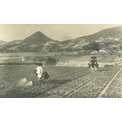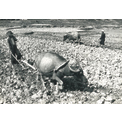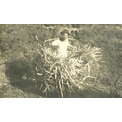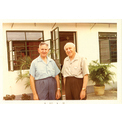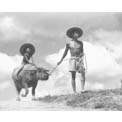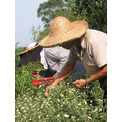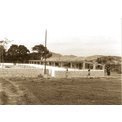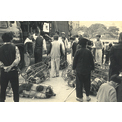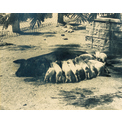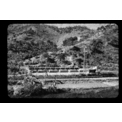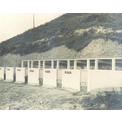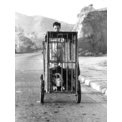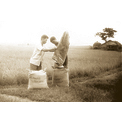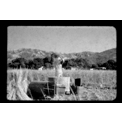-
History & Society
- Education in Pre-war Hong Kong
- History of Taikoo Sugar Refinery
- Hong Kong Products Exhibition
- Local Festivals Around the Year
- Post-war Industries
- Pre-war Industry
- The Hong Kong Jockey Club Archives
- Tin Hau Festival
- Memories We Share: Hong Kong in the 1960s and 1970s
- History in Miniature: The 150th Anniversary of Stamp Issuance in Hong Kong
- A Partnership with the People: KAAA and Post-war Agricultural Hong Kong
- The Oral Legacies (I) - Intangible Cultural Heritage of Hong Kong
- Hong Kong Currency
- Hong Kong, Benevolent City: Tung Wah and the Growth of Chinese Communities
- The Oral Legacies Series II: the Representative List of the Intangible Cultural Heritage of Hong Kong
- Braving the Storm: Hong Kong under Japanese Occupation
- A Century of Fashion: Hong Kong Cheongsam Story
Geography & EnvironmentArt & Culture- Calendar Posters of Kwan Wai-nung
- Festival of Hong Kong
- Ho Sau: Poetic Photography of Daily Life
- Hong Kong Cemetery
- Sketches by Kong Kai-ming
- The Culture of Bamboo Scaffolding
- The Legend of Silk and Wood: A Hong Kong Qin Story
- Journeys of Leung Ping Kwan
- From Soya Bean Milk To Pu'er Tea
- Applauding Hong Kong Pop Legend: Roman Tam
- 他 FASHION 傳奇 EDDIE LAU 她 IMAGE 百變 劉培基
- A Eulogy of Hong Kong Landscape in Painting: The Art of Huang Bore
- Imprint of the Heart: Artistic Journey of Huang Xinbo
- Porcelain and Painting
- A Voice for the Ages, a Master of his Art – A Tribute to Lam Kar Sing
- Memories of Renowned Lyricist: Richard Lam Chun Keung's Manuscripts
- Seal Carving in Lingnan
- Literary Giant - Jin Yong and Louis Cha
Communication & Media- Hong Kong Historical Postcards
- Shaw Brothers’ Movies
- Transcending Space and Time – Early Cinematic Experience of Hong Kong
- Remembrance of the Avant-Garde: Archival Camera Collection
- Down Memory Lane: Movie Theatres of the Olden Days
- 90 Years of Public Service Broadcasting in Hong Kong
- Multifarious Arrays of Weaponry in Hong Kong Cinema
-
History & SocietyGeography & EnvironmentArt & Culture
-
View Oral History RecordsFeatured StoriesAbout Hong Kong Voices
-
Hong Kong MemoryA Partnership with the People: KAAA and Post-war Agricultural Hong KongRecently Visited
All Items
Farmers in the New Territories worked hard to earn a living. The picture shows farmers watering a field.. Soon after the end of World War Two, civil war broke out in China. Escaping refugees surged into Hong Kong en masse. Some of the refugees were entrepreneurs and urban settlers who would later fuel Hong Kong’s industrial boom. Others who had no money or knew no skills, settled in the New Territories as subsistence farmers. In the early 1950s, only 13.5% of Hong Kong’s total land area was used for farming, and most of this was made up of paddy fields. Vegetable and livestock production were few. This meager farming production was far from sufficient to meet urban demand, and so Hong Kong’s population relied heavily on imported goods from China. However, the creation of the People’s Republic of China aroused concerns from Hong Kong’s colonial Government about their dependency on such imports. With the urban mouths to feed, immigrant farmers to settle and food security concerns, the Government became increasingly proactive with regards to strengthening Hong Kong’s agriculture. The picture shows farmer working hard on the field. The Kadoorie brothers: Horace (left) and Lawrence (right). KAAA could be regarded as a partnership with the people, by the people and for the people. With KAAA’s capital and tools and the agricultural department’s expertise, farmers were given autonomy and self respect, and the now productive units were able to work together for the benefit of the community to satisfy Hong Kong’s food demand.The accelerating pace of urbanisation in the New Territories from the 1970s onwards, and the exodus of the farming population, led to a decline in Hong Kong’s agricultural industry. KAAA kept in step with this social change. In 1995, KAAA evolved to become the Kadoorie Farm and Botanic Garden Corporation (KFBG). This picture shows KAAA pigsties in Yuen Long. Pictured here is pig distribution at a KAAA unit. KAAA offered loan for pig feed purchase. Repayment dues when the litters were mature and ready to be sold at market. KAAA helped poor vegetable growers exploit a secondary source of income through pig rearing. Pictured here is pigsties in a vegetable field.KAAA pigsties in Tai Po Kau. For a small charge, the Government supplied boars to mate with sows. This service was also available from local boar keepers while KAAA provided boar-on-demand service. In 1959, the Government introduced artificial insemination to better protect swine from contagious diseases. Most borrowers used the loan from the Kadoorie Agricultural Aid Loan Fund (KAALF) to buy feed, seeds and fertilisers. Applications for the loan from the Kadoorie Agricultural Aid Loan Fund (KAALF) were first promptly investigated by Government agricultural officers who aimed to reply within a week. After the loan was granted, regular visits to farmers were made to ensure the proper use of loan money and to assess agricultural production. “Fong Kuk Fa” literally means “Paddy loan”, which was a short-term loan for paddy farmers. “Paddy loans” were needed because between planting and harvest time, farmers had an arduous three and a half month toil without income. In order to finance their farming needs and to make ends meet, farmers would borrow money at planting time and repay the loan at harvest time.Copyright © 2012 Hong Kong Memory. All rights reserved.
| Set Name |






